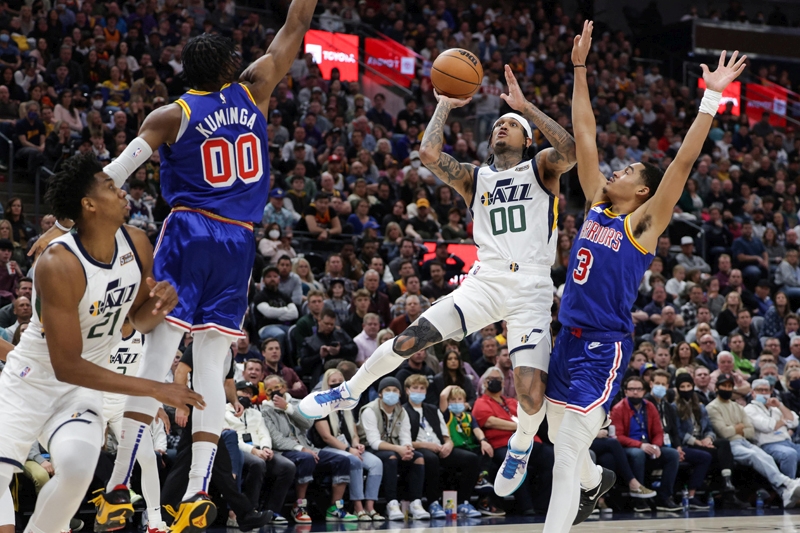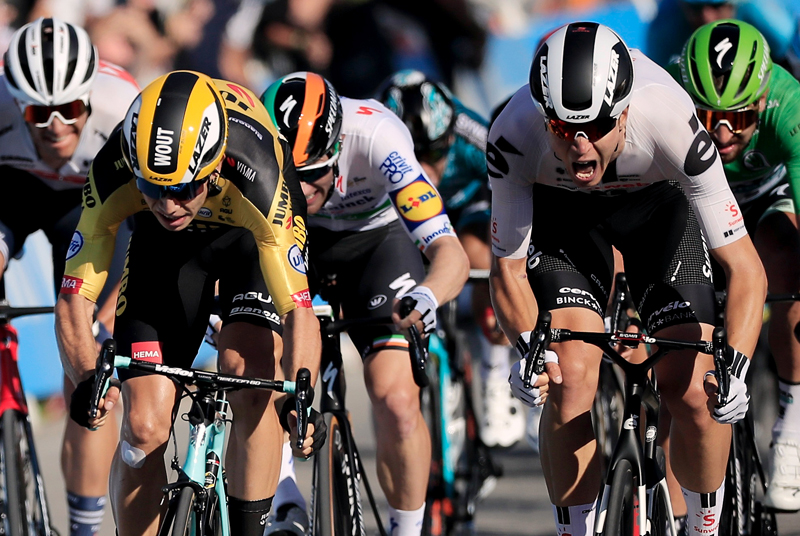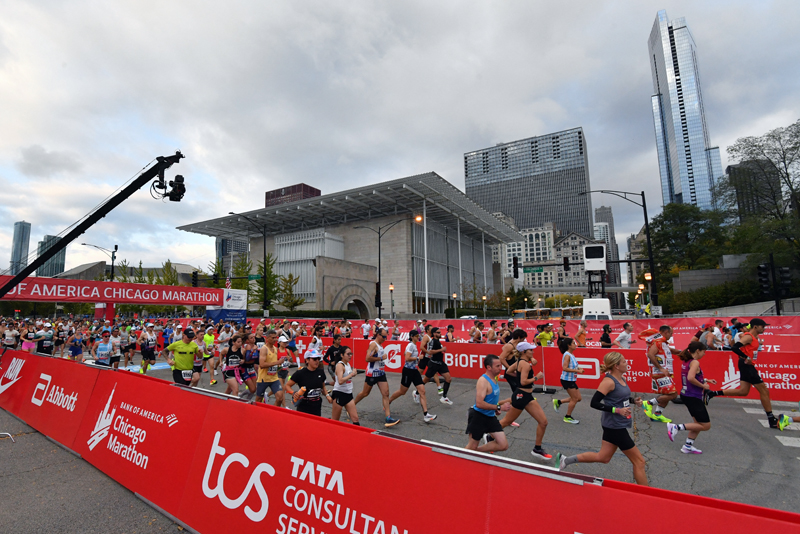You are viewing 1 of your 1 free articles. For unlimited access take a risk-free trial
Plyometrics for agility: a need for balance?

Can the benefits of plyometrics training be enhanced with additional balance training? New research on badminton players provides food for thought
Athletes endowed with high levels of endurance, strength and power are well equipped to perform in many types of sports. However, for some sports, that might not be enough. In sports such as badminton, tennis, basketball etc requiring fast and frequent changes or directions, rapid acceleration and deceleration, jumping and landing stability, and the ability to maintain balance while executing precision movements, there’s another dimension to consider – agility, dynamic balance and ‘quickness’. Quickness refers to the power and ability of the lower limbs to change body direction and dynamic balance ability to control body posture, so as to overcome the inertial effect caused by acceleration and deceleration braking in the process of changing direction.Developing agility, dynamic balance and quickness
Given the importance of the above, what kinds of training strategies can improve dynamic balance and quickness? One popular training mode is plyometrics training (PT). PT is widely used in the training of athletes, as it can improve jump performance capabilities and strength. Several studies have examined the use of PT in terms of benefits for strength(1), running efficiency(2), agility(3) and sprint ability(4). Moreover, recent studies have shown that compared to traditional resistance training, PT can induce comparable or even better effects on enhancing the performance of athletes by improving their balance, power, agility and strength(5-8).More recently, a ‘combined intervention’ approach has been developed by implementing a plyometrics program alongside balance training. This plyometrics/balance combined training is claimed to simultaneously improve key physiological aspects of fitness that contribute to dynamic balance and quickness, thus inducing greater benefits for the performance compared the same time invested using only one mode of training.
There’s also evidence for the benefits of a combined approach; studies have demonstrated that combined training can significantly improve the strength, balance, and change of direction (COD) ability of basketball and football players compared to the intervention using only one type of training(9,10). In badminton (where dynamic balance control, landing stability and quick adjustments such as acceleration, deceleration, and COD of the body trunk are vital), a combined training program of balance and plyometrics training consisting of depth jumps and balance exercises on unstable platforms) improved COD ability more than an equivalent plyometrics-only program(11).
Combined training for dynamic balance and quickness
It seems as though plyometrics combined with balance training can enhance change of direction ability. But could it also improve dynamic balance and ‘quickness’? New research has tried to answer this question. In a new study published in the International Journal of Environmental Research and Public Health, researchers have examined the effects of a 6-week combined training on dynamic balance and quickness performance in elite badminton players(12).Sixteen players were randomly allocated to a combined balance and plyometric training group (8 players) or a plyometrics-only group (8 players). All participants from both groups conducted a 6-week training program three times per week with 24–48 hours of recovery between each training session. The combined plyometrics-balance group practiced a balance training program using the unstable conditions (eg wobble board) – see table S1 for a detailed description. The plyometrics-only group also performed the same program but on a stable floor. This was to ensure that the only difference between the two groups was the actual balance component, which was present in the plyometrics-balance group but absent in the plyometrics-only group.
Both the plyometrics-balance and plyometrics-only groups also conducted an identical plyometrics training program (see table S2 here). Before the formal 6-weeks training program and testing, all participants completed a 2-week practice (3 times/week) to be familiar with balance exercises, plyometrics exercises and the procedure of the test. During this period, par ticipants received proper skill instructions from a strength and conditioning coach. The dynamic stability and quick movement ability in the players were assessed at baseline and after the 6-week intervention by measuring the players’ performances in the dynamic and change of posture stability test, a T-running test (see figure 1) and hexagon jump test (jumping in and out all sides of a hexagon marked on the floor – a measure of ‘quickness’).
Figure 1: The modified T-running test

Players sprint from A to B, then sidestep left to C, sidestep all the way to D, sidestep back to center position then run backwards to A.
The results
The results showed that dynamic balance and quickness performance in the elite badminton athletes were significantly improved after combined plyometrics-balance training compared training using plyometrics only. In particular, the players performed significantly better in the dynamic and change of posture stability tests, the T-running test and hexagon jump test. Both groups improved their COD ability, but here the plyometrics-only group fared just as well as the plyometrics-balance group.When summing up their findings, the researchers added that while the length of any combined plyometrics-balance training period, the best intensity and the number of sessions for optimum performance gains are unknown, this approach provides a promising strategy to improve the functionality of elite badminton athletes and potentially help their on-court performance. Moreover, it seems likely that these benefits are equally applicable to other athletes requiring quickness and dynamic balance such as those participating in sports such as basketball, tennis, hockey etc. For athletes and coaches considering embarking on a combined program, this article on balance/agility training and this article on the basics of plyometrics are good starting points. Readers are also directed to the combined program outlined in this study, which can be found here (open the zip file after downloading).
References
- Sport Sci. 2012;5:67–70
- Strength Cond. Res. 1996;10:89–92
- J Strength Cond Res. 2008 May; 22(3):715-25
- Sports Med. 2010 Oct 1; 40(10):859-95
- Sci. Med. Sport. 2010;13:332–339
- J. Sports Physiol. Perform. 2016;11:563–573
- Phys. Educ. Sport. 2018;18:2476–2482
- Sport Sci. Health. 2020;16:297–304
- Front Physiol. 2018; 9():1611
- BMC Sports Sci Med Rehabil. 2019; 11():18
- Front Psychol. 2021; 12():684964
- Int J Environ Res Public Health. 2022 Feb; 19(3): 1605
Newsletter Sign Up
Testimonials
Dr. Alexandra Fandetti-Robin, Back & Body Chiropractic
Elspeth Cowell MSCh DpodM SRCh HCPC reg
William Hunter, Nuffield Health
Newsletter Sign Up
Coaches Testimonials
Dr. Alexandra Fandetti-Robin, Back & Body Chiropractic
Elspeth Cowell MSCh DpodM SRCh HCPC reg
William Hunter, Nuffield Health
Keep up with latest sports science research and apply it to maximize performance
Today you have the chance to join a group of athletes, and sports coaches/trainers who all have something special in common...
They use the latest research to improve performance for themselves and their clients - both athletes and sports teams - with help from global specialists in the fields of sports science, sports medicine and sports psychology.
They do this by reading Sports Performance Bulletin, an easy-to-digest but serious-minded journal dedicated to high performance sports. SPB offers a wealth of information and insight into the latest research, in an easily-accessible and understood format, along with a wealth of practical recommendations.
*includes 3 coaching manuals
Get Inspired
All the latest techniques and approaches
Sports Performance Bulletin helps dedicated endurance athletes improve their performance. Sense-checking the latest sports science research, and sourcing evidence and case studies to support findings, Sports Performance Bulletin turns proven insights into easily digestible practical advice. Supporting athletes, coaches and professionals who wish to ensure their guidance and programmes are kept right up to date and based on credible science.











